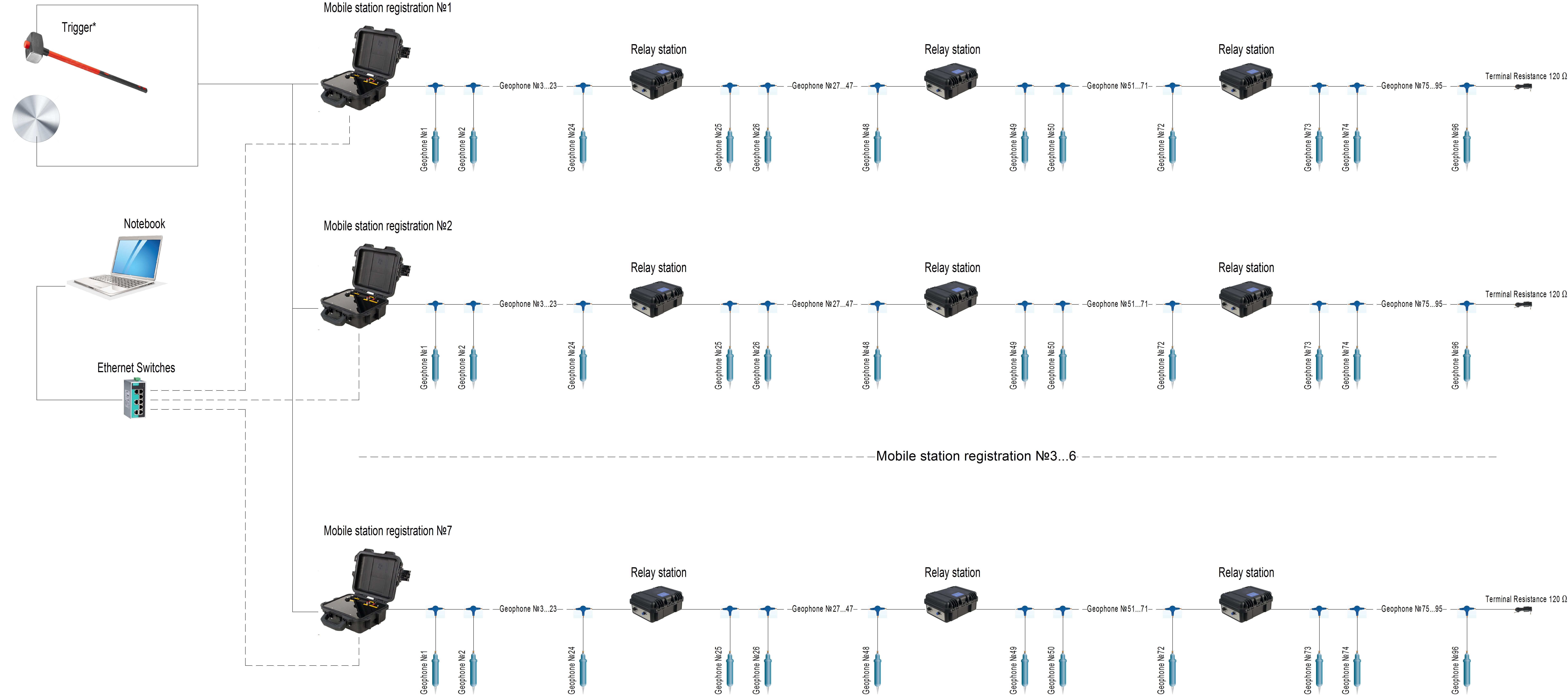Monitoring system scalability
in the course of seismic survey performance
Engineering seismics encompasses a complex structure of methods, having a variety of sub-types and modifications. Choice of seismic survey method is primarily based on analysis of essence and complexity of a particular task, surface and deep environments, cost and speed of a seismic survey performance. Major seismic research methods are as follows: reflection method, refraction methods with various polarization types (lateral, transverse, exchange)
Experience has proven that the surface waves method is suitable for the range of 0-20 meters, refracted waves methods – for the range of 2-25 meters, reflected waves methods – for the range of 15-100 meters. Thus, the most effective approach to engineering seismics research would be to jointly implement these methods in order to obtain as much data as possible.
Based on a particular method, one should select corresponding control system. The control systems have a wide range of adjustable parameters – in particular, layout length and recorders number.
For a number of methodological and economic considerations, the long layouts are especially popular. They enable a large area of target waves control. For engineering seismics shallow measurements purposes it is usually enough to use 24- or 12- channels seismic stations.
A kit for seismic research performance manufactured by ZETLAB Company is a universal control system enabling application of any particular seismic research method.

The kit has modular design – so, depending on a particular task, it can be transformed into layouts of bigger length. This is achieved by means of repeaters – special devices enabling power supply of an additional section with length up to 250 meters (number of measuring channels – up to 24). Besides, the repeater performs synchronization of all the layout channels, i.e. it is used as a synchronization device for the additional sections and adjusts the sections with each other.
A single offline recorder (ZETSENSOR) mobile kit enables connection of up to 3 repeaters within a single layout. Thus, the total length of a single layout is up to 1 kilometer.
Layout length should correspond to the wave traceability area at the reference point. Short layouts are used for the purposes of detailed survey of near-surface ground sections, while longer layouts are used for deep strata research.
The kit for seismic research performance can be used for 3D seismic survey purposes. 3D seismic surveys are performed by means of three-dimensional control systems. As the patch is moved along the measuring line, it should also be moved in the transverse direction – this is the way the wide-patch survey is performed.
Simultaneous use of several seismic research kits allows to save the time for patches relocaton. The seismic research kits are distributed around the researched area. The trigger is sequentially connected to all the offline recorders. This allows to synchronize the start of the recording process by a particular event. There are to ways to perform off-line recorders synchronization by time:
- GPS – in the case if each off-line recorder has an integrated GPS synchronization module ZET 7175;
- PTP protocol – in this case one of the recorders should have an integrated GPS synchronization module, while the remaining recorders are connected to it by Ethernet.
